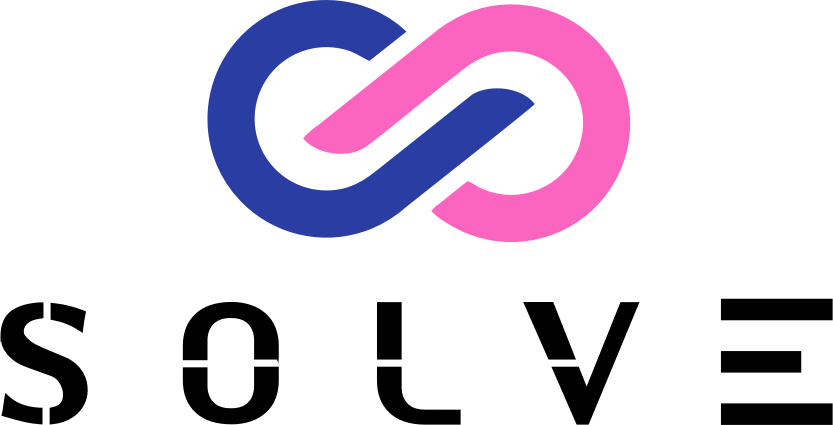- By Vanshika Choudhary
- March 6, 2025
Now mobile phones are part and parcel of life. From social activities to shopping, we have apps for everything. The thought that app development may change in 2025 excites the mind. In this blog, we will discuss future mobile app development from major trends shaping the app industry.
Emergence of AI-Powered Applications
AI is taking one notch higher in almost every domain, and mobile applications are not an exception. From 2025, we shall have a very clear picture of how AI will interact with our apps for their operation.
What is AI?
Artificial intelligence by definition refers to computer systems performing tasks that usually require human intelligence, such as understanding speech, recognizing that an image is of a person’s face, and making complex decisions. AI is a system that learns from data, recognizes new input, and performs automatic work.
How AI Will Change Mobile Apps
Personalized Experiences:
AI will analyze user behavior and preferences in order to provide customized content. For example, if you purchase articles mostly on sports, the app might display the latest sports equipment available on sale, especially for you. Personalization is a great way of increasing engagement for users.
Smart Assistants:
There will be smart assistants built within several apps that will understand your voice commands. Just imagine asking your shopping app to find the best price for an item and it finds it immediately! This is going to be a whole lot easier and more natural when trying to navigate through apps.
Predictive Analytics:
AI would give a prediction regarding your next possible need based on previous actions. That means, before knowing you want something (a product or service), you will be suggested to get it. For example, a music app might suggest some songs or playlists based on the user’s listening history.
Real-world examples
In industries like healthcare, such AI-powered apps help doctors to very better diagnose diseases by studying the case history of the patient. For example, such an app would analyze medical images and flag issues that need human eye review. In retail, artificial intelligence can be trained to know what consumers might appreciate by making recommendations according to their shopping habits, and much more.
The Growing Trend in Low-Code/No-Code Development
The most attractive thing in emerging areas is the rise of low-code and no-code platforms. Such platforms enable people to build apps without having that massive knowledge of programming.
What Are Low-Code and No-Code Platforms?
Low Code: Some level of coding is required here, but the process of building apps is significantly simplified and downright faster. The resulting applications are created within visual interfaces and pre-constructed components are mixed and matched.
No Code: These platforms let users create applications through visual tools without coding. Users only need to drag and drop elements onto a canvas to outline their applications.
Benefits of Low-Code/No-Code Development
Access: More people can now have the ability to develop an application—some without any form of technical knowledge. This means even more brilliant ideas can come to light, creating new applications from the minds of people of all sorts of skills.
Speed: Developers can complete a project far faster with this kind of environment. This is most beneficial to businesses that wish to rapidly develop products in response to market demands or client feedback.
Costs: The time space utilized for coding development is reduced, resulting in savings and better utilization of resources for business development.
Future Impact
By 2025, we will see more and more businesses developing applications using low-code platforms or no-code platforms. This phenomenon will bring about an influx of innovative and creative ideas as more and more people start experimenting with the development of applications. Companies may even allow employees from other departments, like marketing or sales, to develop their own tools tailored to their specific needs.
3. 5G Technology and its Applications
5G is the next leap into the future for mobile networks—fast, better connectivity services.
What’s in 5G?
5G, in short, is the fifth generation of mobile networks. It offers fast internet speed, which far exceeds what current networks such as 4G provide, often leading to much smoother experiences when using apps. It will allow downloading big files in seconds and HD videos without streaming lag.
How 5G Will Change Mobile Apps
Rapid Loading of Applications: The applications will load almost instantly with the advent of a stronger bandwidth along with much less delay due to latency, later defined as the time between initiation and commencement of the user experience. Of course, this will make the user enjoy a much quicker service.
Reality in Real-Time: With low latency, applications provide real-time updates. Life event streaming or playing games would definitely be much more interesting with minimum lag time.
IoT Integration: IoT refers to appliance development for everyday live devices connected to the internet, such as smart home appliances and so on. With 5G, mobile applications will directly control these devices more efficiently, allowing seamless integration of different technology worlds.
Real-World Examples
Imagine a smart home app where you could control your lights, thermostat, and security system straight from your phone, instantaneously! That is basically the power of 5G technology. In addition, the real-time monitoring of patients by connected medical devices that relay data immediately back to medical professionals will certainly benefit many areas, such as healthcare.
4. Applications of Augmented Reality (AR) and Virtual Reality (VR)
These are the technologies that are supposed to change the very way that humans interact with the world around them.
What are AR and VR?
AR, or augmented reality, adds some digital elements to the real world through your phone camera. For example, you could see how a piece of furniture looks in your living room before buying it by overlaying a digital image onto your physical space.
VR = Virtual Reality: You enter an entirely virtual world that you can explore through headsets. Users feel they are in a virtual world with the possibility to interact with objects as if they were real.
AR and VR Evolution
From 2025 onward, augmented and virtual reality mobile applications will become more commonplace.
Shopping: Retailers will utilize AR to let the customer visualize how the products would look in their homes. Imagine dressing up in clothes or placing furniture in the room through an app!
Education: Schools could use VR to take students on virtual field trips or offer immersive experiences in which they could visit historical locations or scientific concepts firsthand.
Examples in the Real World
Pokémon GO really popularized augmented reality by allowing players to catch Pokémon in real-world locations! And there are bound to be even more innovative applications: museums offering AR tours would let visitors point their phones at exhibits to learn more about them interactively.
5. The Importance of UX Design
User experience design is essentially the how’s and why’s of user interaction with the app. To hold users’ attention and keep them, there has to be good UX.
Importance of UX
An attractively designed app is user-friendly, making it a delight for users. An app that is confusing and requires time for the user to figure it out will lose him within seconds of launching. Along with putting a smile on the user’s face, good UX will ensure it keeps bringing them back for more!
UX Design Trends
Touchless Interfaces: The technique would go a step further to allow the app to be operated by gestures or voice instead of touch. Can you imagine waving your hand over your phone screen to scroll through options?
Inclusive Design: The designers will work on all-inclusive apps, even for the disabled. This can involve voice commands for people who cannot use a touchscreen or color enhancers for color-blind patients.
6. Voice-Driven Applications
With the increased use of smart speakers with voice assistants like Siri and Google Assistant, voice technology has gained popularity.
Changes in the Applications with Voice Technology by 2025:
Hands-Free Control: Users will verbally command applications while they multitask, be it cooking or driving.
Improved Voice Recognition: Advancements in machine learning algorithms will make voice recognition technology better. High accuracy means less user agony when what they wanted to say got misinterpreted.
Real-World Examples
Imagine ordering groceries by voice while preparing dinner! You could say something like “Add milk and bread” while chopping vegetables, and your grocery app instantly updates your shopping list! Voice-driven apps will facilitate the ease of multitasking.
7. Enhanced Cybersecurity Measures
And ever since that, mobile technology must know that advanced technology comes with its cybersecurity-related disadvantages. A breach of user data by hackers is imperative for securing that trust among the users and developers.
The Importance of Security in App Development
As more and more personal information is shared via apps, such as payment details and health records, it is imperative for developers to look into security measures in the development phase rather than just as an afterthought later.
Cybersecurity Trends By 2025:
Zero-Trust Architecture: Unlike the conventional methods, wherein access requests from inside the network were approved easily, and from outside, were verified strictly; here, a precise posture is formed that treats both internal and external threats equally; hence, every access request shall be verified.
Conclusion
The future of mobile application development is bright, moving towards 2025! With integration advances in AI for day-to-day activities, low-code/no-code platforms gaining traction, creating opportunities; faster connectivity through state-of-the-art 5G; immersive experiences with AR/VR technologies; improved user experience keepability; voice technology unleashing hands-free; decentralized systems enhancing the privacy space; and stronger cyber protection mechanism Contact us as the best is something to look forward to!




